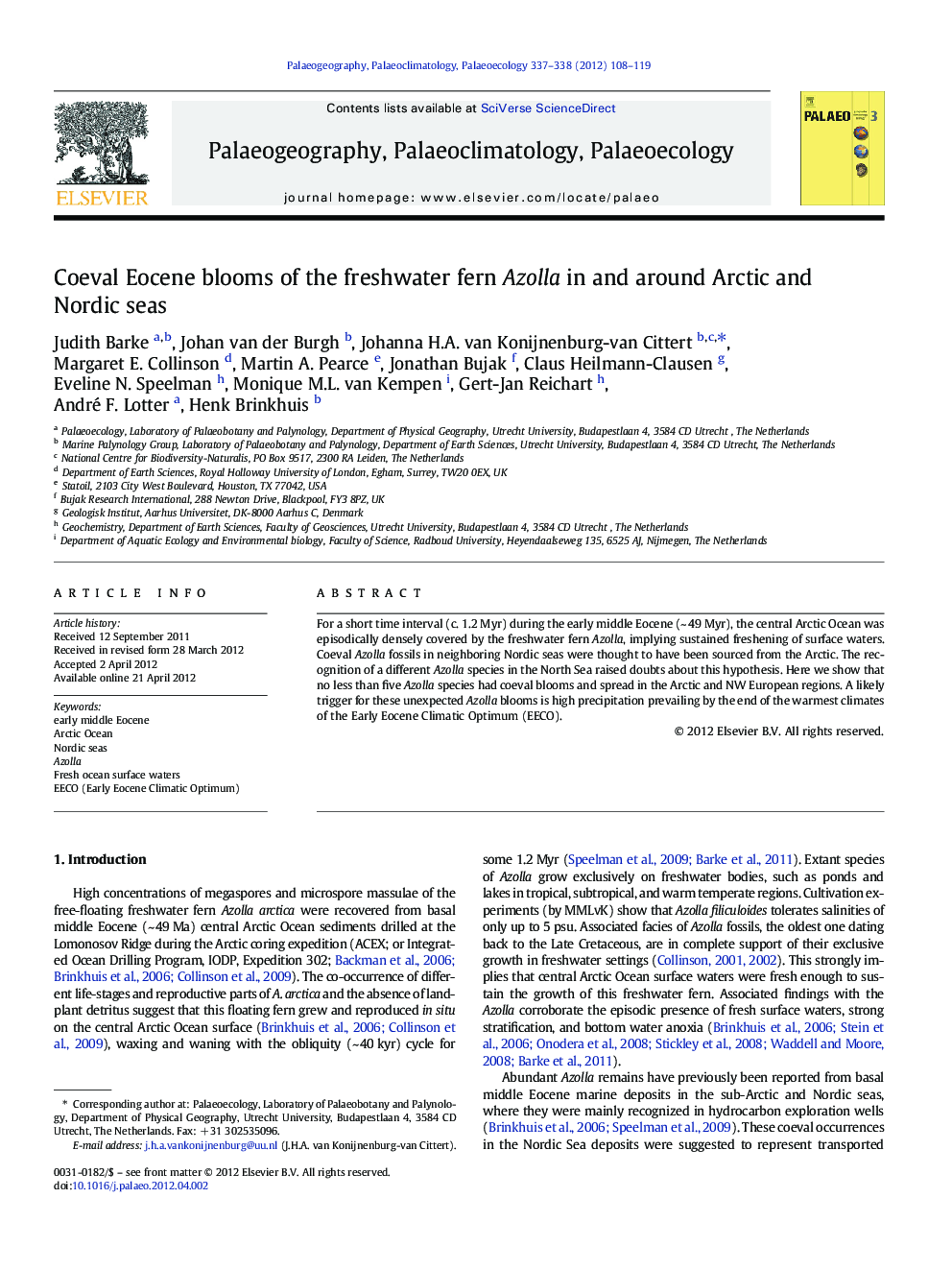| Article ID | Journal | Published Year | Pages | File Type |
|---|---|---|---|---|
| 4466913 | Palaeogeography, Palaeoclimatology, Palaeoecology | 2012 | 12 Pages |
For a short time interval (c. 1.2 Myr) during the early middle Eocene (~ 49 Myr), the central Arctic Ocean was episodically densely covered by the freshwater fern Azolla, implying sustained freshening of surface waters. Coeval Azolla fossils in neighboring Nordic seas were thought to have been sourced from the Arctic. The recognition of a different Azolla species in the North Sea raised doubts about this hypothesis. Here we show that no less than five Azolla species had coeval blooms and spread in the Arctic and NW European regions. A likely trigger for these unexpected Azolla blooms is high precipitation prevailing by the end of the warmest climates of the Early Eocene Climatic Optimum (EECO).
► Multiple Azolla species spread across early middle Eocene Arctic and NW Europe. ► Massive proliferation of Azolla due to high precipitation in warm climate (end EECO). ► In situ Azolla growth on Arctic and Nordic seas implies fresh surface waters. ► Widespread wetlands with Azolla surround early middle Eocene Arctic and Nordic seas.
